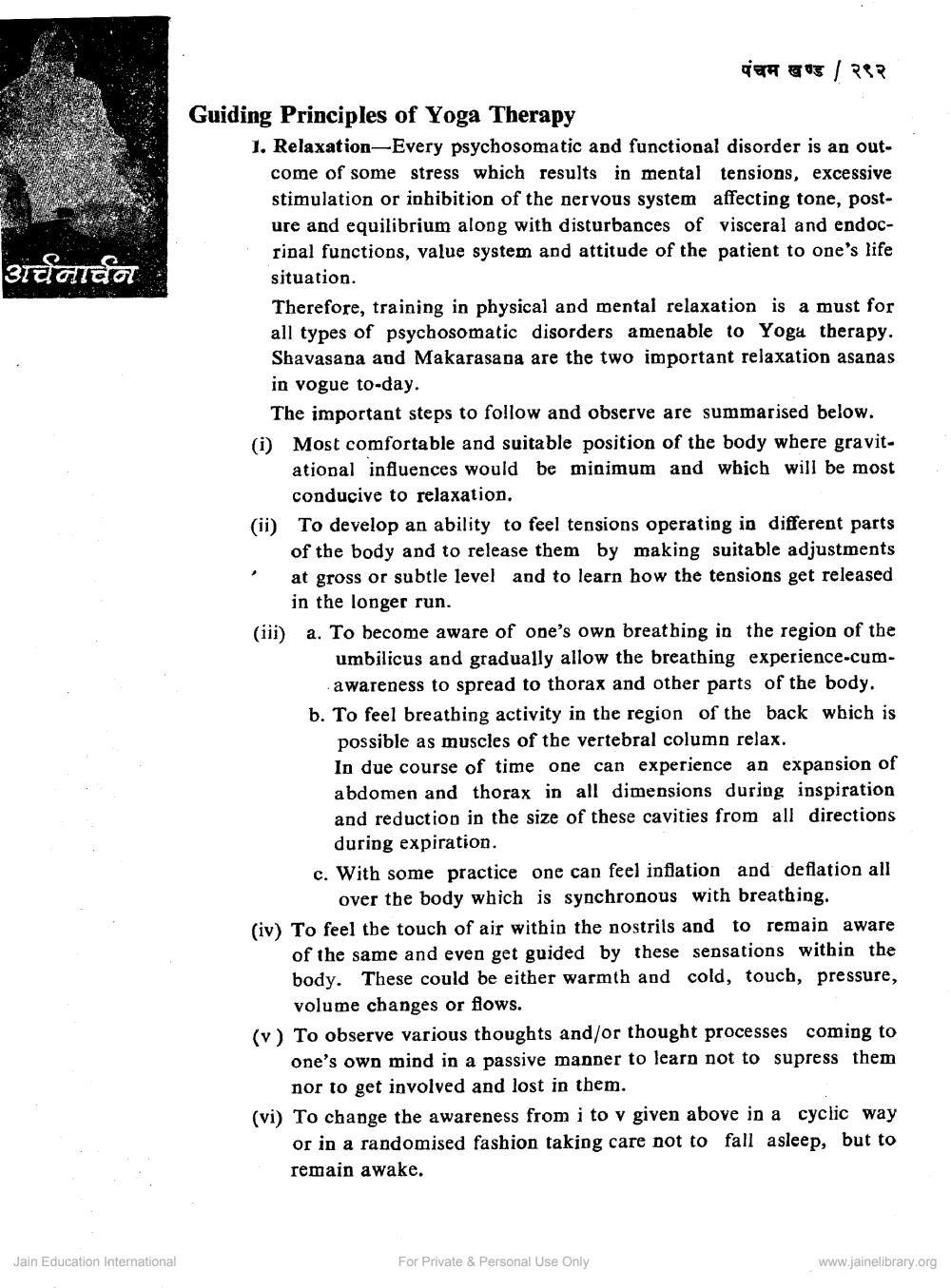Book Title: Therapeuatic Application of Yoga Teachniques Author(s): M V Bhole Publisher: Z_Umravkunvarji_Diksha_Swarna_Jayanti_Smruti_Granth_012035.pdf View full book textPage 2
________________ पंचम खण्ड | २९२ Guiding Principles of Yoga Therapy 1. Relaxation-Every psychosomatic and functional disorder is an out come of some stress which results in mental tensions, excessive stimulation or inhibition of the nervous system affecting tone, posture and equilibrium along with disturbances of visceral and endocrinal functions, value system and attitude of the patient to one's life situation. Therefore, training in physical and mental relaxation is a must for all types of psychosomatic disorders amenable to Yoga therapy. Shavasana and Makarasana are the two important relaxation asanas in vogue to-day. The important steps to follow and observe are summarised below. (i) Most comfortable and suitable position of the body where gravit. ational influences would be minimum and which will be most conducive to relaxation. (ii) To develop an ability to feel tensions operating in different parts of the body and to release them by making suitable adjustments at gross or subtle level and to learn how the tensions get released in the longer run. (iii) a. To become aware of one's own breathing in the region of the umbilicus and gradually allow the breathing experience-cum awareness to spread to thorax and other parts of the body. b. To feel breathing activity in the region of the back wbich is possible as muscles of the vertebral column relax. In due course of time one can experience an expansion of abdomen and thorax in all dimensions during inspiration and reduction in the size of these cavities from all directions during expiration. c. With some practice one can feel inflation and deflation all over the body which is synchronous with breathing. (iv) To feel the touch of air within the nostrils and to remain aware of the same and even get guided by these sensations within the body. These could be either warmth and cold, touch, pressure, volume changes or flows. (v) To observe various thoughts and/or thought processes coming to one's own mind in a passive manner to learn not to supress them nor to get involved and lost in them. (vi) To change the awareness from i to v given above in a cyclic way or in a randomised fashion taking care not to fall asleep, but to remain awake. PETU. Jain Education International For Private & Personal Use Only www.jainelibrary.orgPage Navigation
1 2 3 4 5 6 7 8 9 10 11
